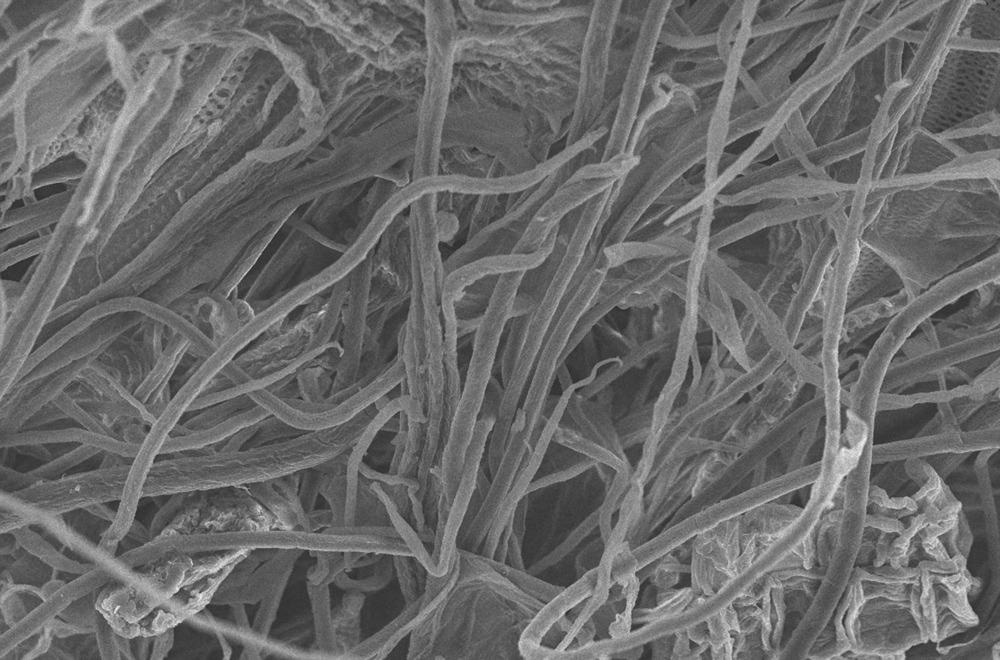The researchers from China and the Czech Republic have published an article in the Journal of Cleaner Production focusing on novel sustainable and environmentally friendly methods to produce cellulose nanocrystals while performing a life cycle assessment analysis to optimize the process.

Study: Greener production of cellulose nanocrystals: An optimised design and life cycle assessment. Image Credit: TinyPhoto/Shutterstock.com
Introduction to Cellulose Nanocrystals (CNC)
Cellulose is the most prevalent polymeric material on the planet, and it is a significant structural constituent of plant cell walls. It is an organic polymer that is tubular, stiff, and insoluble.
Cellulose nanocrystals are one-of-a-kind nanoparticles generated from cellulose, a substantially widespread and nearly limitless organic biopolymer. Because of their tensile, photonic, biochemical, and physio - mechanical capabilities, these nanoparticles have piqued the curiosity of many researchers.
Cellulose nanocrystals, which are predominantly derived from naturally produced cellulose fibers, are recyclable and regenerative, making them a durable and ecologically acceptable substance for the majority of uses.
These nanocrystals are naturally hydrophilic; nevertheless, they may be chemically functionalized modulated to suit a variety of demanding criteria, such as the production of highly efficient nanocomposites.
Their global market is predicted to increase from $271.26 million in 2017 to $1,076.43 million by 2025, at a compound yearly rate of growth of 18.8 percent.
Limitations of Cellulose Nanocrystals
Although CNC is quite advantageous in terms of surface modulation, several limitations limit its use.
Researchers lack a global benchmark for surface properties, fiber volume ratio, size distribution, and other parameters due to the diverse origins of CNCs.
It is difficult to recommend a typical surface treatment technique under these conditions. Frequently, researchers fail to accurately replicate the same technique.
Future development must establish an internationally acknowledged reference for the CNCs product itself. Apart from this, expensive production and cytotoxicity are also a major threat to its vast commercialization.
Approaches for Synthesis
Many methods for isolating CNCs from lignocellulosic materials have been explored, including the acid hydrolysis process, advanced oxidation processes, and enzymatic hydrolysis.
Sulphuric acid hydrolysis is the most researched and widely utilized of these methods. In this procedure, cellulosic substances are initially aggressively combined with strong sulphuric acid in the range of 30–65 wt percent.
The degradation reaction is halted by introducing water and diluted with sodium hydroxide after 30–240 minutes. Because of their outstanding physical stability and homogenous size distribution, the produced CNCs are suitable for a wide range of purposes
Sulphuric acid degradation is commonly used to manufacture CNCs in pilot-scale and manufacturing because of its ease and predictability.
Cost Reduction and Environmentally Friendly Synthesis
The first strategy for lowering the cost of CNCs from sulphuric acid pre-treatment is to minimize the quantity of sulphuric acid utilized in the degradation reaction.
The second is to remove sulphuric acid from the hydrolysate combination after the breakdown. As a consequence, less alkali and water are utilized, resulting in reduced saline effluent.
As one of the most significant components examined in the manufacturing environment, life cycle assessment has been used as a method for evaluating the ecological impact of services and goods depending on the life cycle inventory (LCI) and for comparing or optimizing fabrication processes.
However, the use of LCA studies is restricted owing to a scarcity of evidence from manufacturing output, as new ways are found daily. Data from pilot-scale manufacturing must still be collected for LCA research.
The novel study involves the development and comparison of three different routes such as gravity settling, ceramic membrane microfiltration, and low-speed centrifugation.
Research Findings
When the hydrolysate combination was diluted six times, the sulphuric acid recovery ratio reached a high of 15.8 percent after 48 hours, and when was raised to 16 times, the recovery ratio climbed to 53.0 percent immediately after 12 hours and reached a high of 63.8 percent after 48 hours.
The gravity settling recovery ratio was 53.0 percent (16 times dilution, 12 h) while the centrifugation recovery ratio was 51.6 percent (7 times dilution, 1000 rpm, 10 min).
The ceramics membrane microfiltration offered a lot of promise for separating sulphuric acid from the CNCs hydrolysate combination.
Ceramic membrane microfiltration was perhaps the most revolutionary technique among these options due to its greater recovery ratio (65.0 percent), acid concentration, and reduced water usage. Furthermore, the life cycle assessment findings indicate that route 4 significantly decreased ecological impacts when compared to other pathways.
When compared to route 1, route 4 reduced aquatic ecotoxicity by 33.4 percent.
More study on the extraction of sulphuric acid from acid-sugar mixtures or its direct reuse is necessary for the future.
Reference
Zhang, L., Jia, X., Ai, Y., Huang, R., Qi, W., He, Z., Klemeš, J. and Su, R., (2022) Greener production of cellulose nanocrystals: An optimised design and life cycle assessment. Journal of Cleaner Production, p.131073. https://www.sciencedirect.com/science/article/pii/S0959652622007065#!
Disclaimer: The views expressed here are those of the author expressed in their private capacity and do not necessarily represent the views of AZoM.com Limited T/A AZoNetwork the owner and operator of this website. This disclaimer forms part of the Terms and conditions of use of this website.